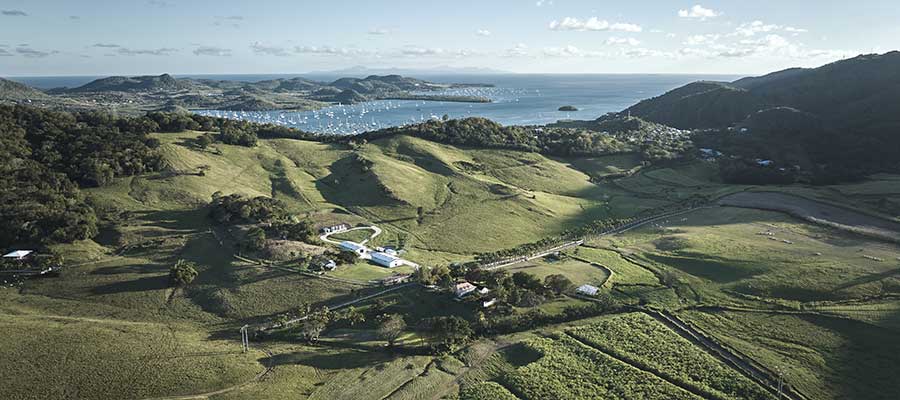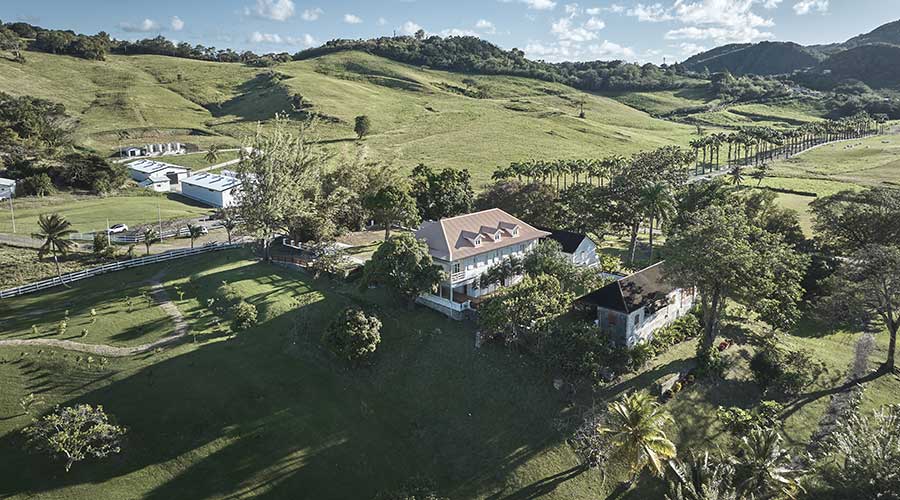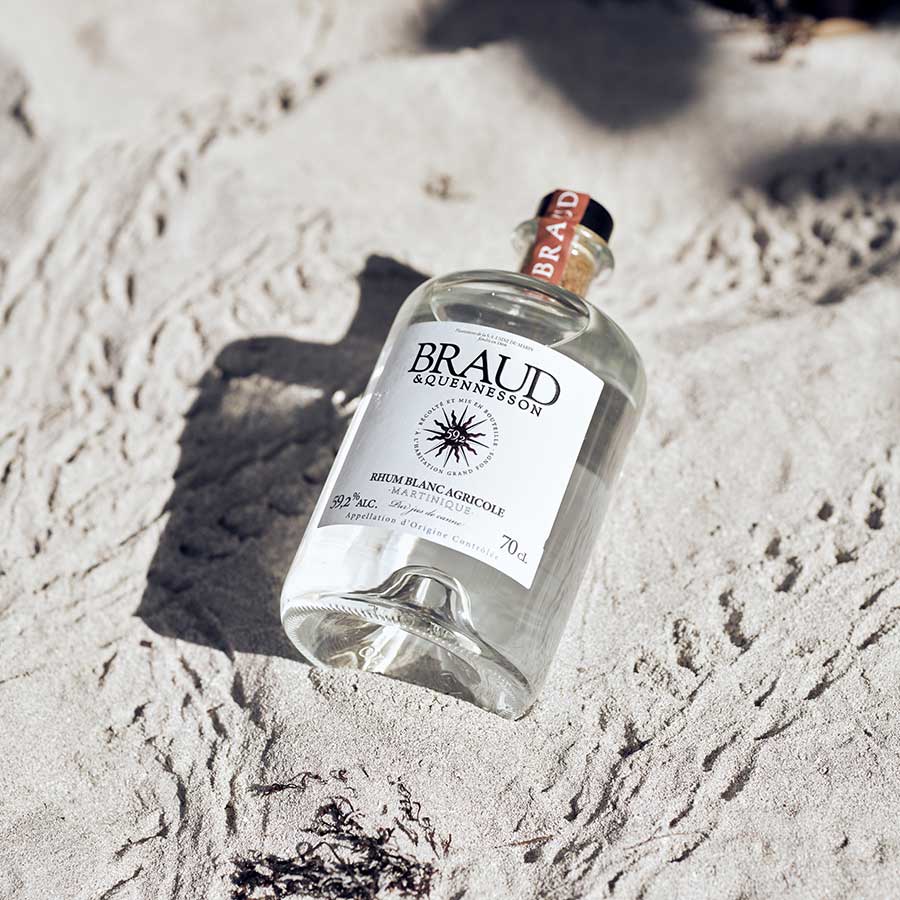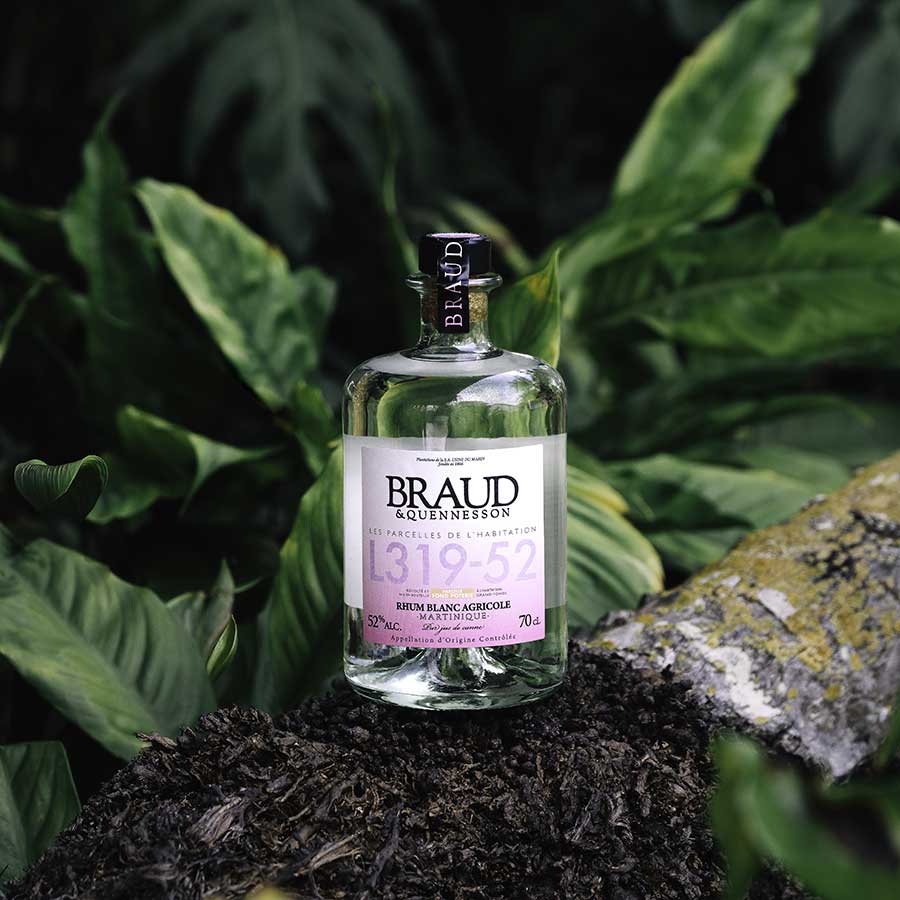This newcomer to the Martinique “game” delighted us with its first premium whites, then with its ESBs. With an aged rum in the pipeline and a distillery soon to be built, and its imposing potential in terms of sugarcane acreage, the brand from Marin (southern Martinique) is positioning itself as a future great.
The Braud & Quennesson brand was launched in 2022, but its origins go back much further in Martinique’s history. The saga began in 1866, when Joseph Quennesson, Charles Harouard and Charles-Jean Braud launched the construction of a central factory (a large-scale sugar refinery channeling and concentrating the region’s production) in the south of Martinique, on the Poirier estate near the town of Le Marin.
Inaugurated in 1869, it became known as the Marin sugar factory. Charles Braud became the majority shareholder in 1878. The Marin factory concentrated the production of 12 sucrotes (small sugar mills) and employed up to 120 people at its peak. Like most of the island’s sugar factories, it was hit hard by the various sugar crises of the 20th century, and eventually closed its doors in 1970. In 1977, a local family bought the estate on which the remains of the distillery were located, which was mainly planted with sugar cane. This activity continued until 1984.
Then the immense estate of 1000 hectares (3500 at its peak), is mainly used for cattle breeding. In 2018, the family decided to bring the Marin sugar and rum site back to life from the ashes, through the launch of the Braud & Quennesson rum factory, and a spiritourism tour. Tourists can admire photos of the factory in its smoky days, visit the cellars, as well as the Habitation Grand-Fonds and its two completely refurbished gardens, complete with a water feature and majestic old trees. The tour ends with a visit to the rum distillery boutique. But who says Rhumerie, says rum!
From cattle to cane
It was also decided to replant the estate with 40 hectares of sugar cane, including B5992 (or yellow cane) to date, with the aim of producing AOC Martinique agricultural rum. We’re in the south of Martinique, so we don’t get as much rain as the north, but we’re lucky enough to be located in a valley, a basin through which the water from the surrounding mountains descends, plus the oxen have enriched and worked the soil for years,” explains Octavie de Gentille, Communication Manager at Braud & Quennesson. So the canes get all the water (the soil is full of it) and sun they need. As a result, yields are good, and the average brix is 20 (for this campaign), and sometimes as high as 23 for certain plots at the very end of the harvest.
From cane to rum
Once cut by machine, the sugar cane is sent to the Simon distillery (where HSE rums are distilled), where it is pressed with imbibition, then fermented in open stainless steel vats of up to 500 hectolitres, in this case for 24 hours, as required by the AOC rhum de la Martinique.
The vesou, which has an average strength of 4%, is then column-distilled. The result is a white rum averaging 72.5%, which is casked at around 65%. Aging takes place in Braud & Quennesson’s cellars on the Grand-Fonds estate, using ex-bourbon and cognac casks, as well as new French and American oak. But within two years, if all goes according to plan, the site should house the entire production process for Braud & Quennesson rums, as a distillery will be installed there.
Premium whites, ESB and soon old rums
From the outset, the sailor’s brand has focused on premium white rums (the first having been produced from the 2022 harvest): a 50%, a 55% and a 59% that have won medals in several competitions, and a 52.5% parcellaire (L319-52) that is both sweet and gourmet. Two wood-aged wines (ESB), called “Sélection du maître de chai” (cellar master’s selection), were then released. One at 47% is destined for supermarkets, the other at 49% for wine merchants. And an aged rum is in the pipeline (but will have to wait at least another year).
And what does the future hold? It’s possible that we’ll make other plot-based rums from other plots if we find them particularly interesting during tasting, but that’s not on the agenda at the moment,” says Octavie de Gentille. We’re also looking into a 40% for mixology, and in the future we’d like to produce a monovetal rum. However, we have no brut de colonne in the pipeline.
A new player in the Martinique rum market is taking off before our very eyes. With the construction of a complete distillery, and a potential increase in the number of hectares devoted to sugar cane on the estate, this is undoubtedly a future great!




